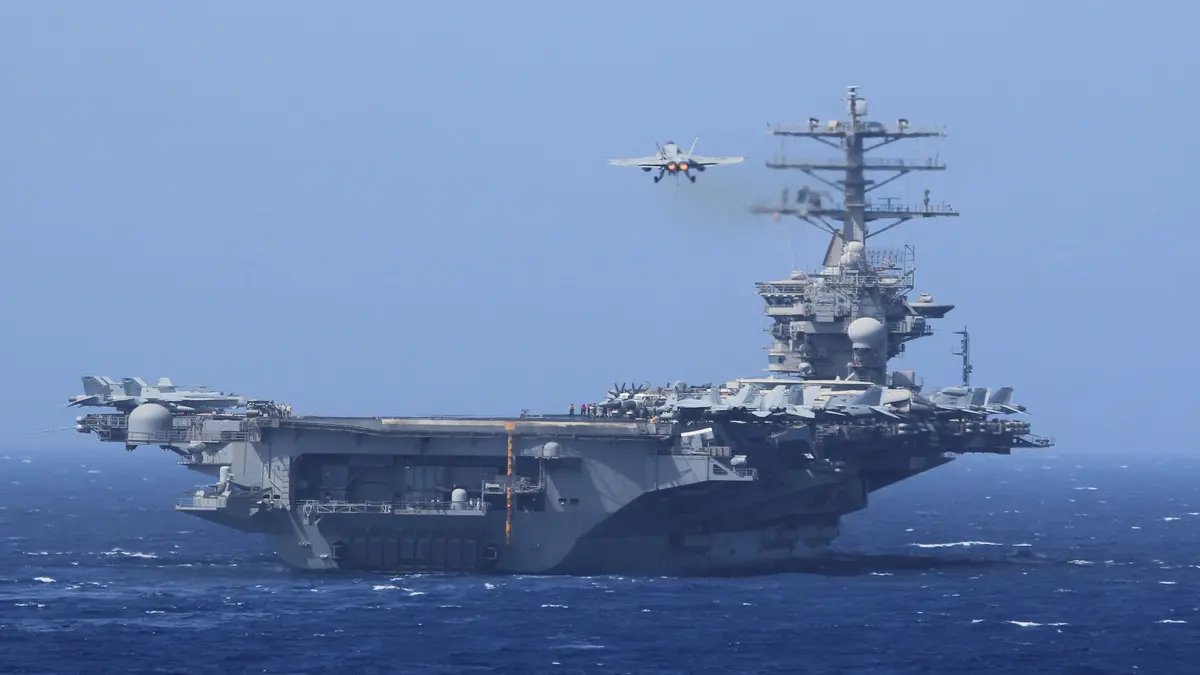“At approximately 1300 GMT on June 16, Marine traffic data showed that the Nimitz was heading west from the South China Sea. Its scheduled port call at Da Nang, Vietnam on June 20 was “abruptly canceled due to emerging operational needs,” Reuters reported, citing diplomatic sources attached to the US Embassy in Hanoi.
Number of US forces in the Middle East
The Nimitz deployment adds significant firepower to an already strong American naval presence in the region. The carrier strike group includes the guided-missile cruiser USS Princeton (CG-59) and the destroyers USS Steward (DDG-104) and USS Ralph Johnson (DDG-114), bringing the total number of aircraft flying to about 60 F/A-18 Super Hornets, EA-18G Growlers and E-2D The Hawkeyes have arrived.
The move follows the recent deployment of the USS Gerald R. Ford. (CVN-78) Carrier Strike Group to the Eastern Mediterranean, creating a two-carrier posture that significantly enhances U.S. power projection capabilities in the broader Middle East region.
Strategic Implications
Defense analysts note that the redeployment of the Nimitz represents more than a routine force movement. The carrier’s advanced air wing provides critical capabilities for both defensive and offensive operations, including precision strike missions, air superiority, and electronic warfare support.
“The decision to redeploy the Nimitz demonstrates how seriously the Pentagon views the current crisis,” said Dr. Sarah Martinez, a naval warfare expert at the Center for Strategic and International Studies. “This deployment of forces to the region since the early stages of Operation Iraqi Freedom Centralization continues. “Levels not seen.”
Regional Response
Iran’s Revolutionary Guard Corps has responded to the growing presence of the US Navy with its own military preparations. Intelligence sources have reported increased activity at Iranian naval bases in Bandar Abbas and Chabahar, including fast attack craft and missile patrol boats conducting extended patrols in the Strait of Hormuz.
The Israeli Defense Forces are coordinating closely with US Central Command to ensure the optimal positioning of American assets to support potential defensive operations and maintain freedom of navigation in vital shipping lanes.
Operational Readiness
The Nimitz Strike Group’s weapons loadout includes approximately 2,000 precision-guided munitions, ranging from AGM-154 Joint Standoff Weapons to AGM-84 Harpoon anti-ship missiles. The carrier’s defensive systems, including the RIM-162 Evolved Seasparrow missile and close-in weapons systems, provide robust protection against potential Iranian asymmetric threats.
Naval intelligence indicates that the strike group is prepared for extended operations, with the supply ships USNS Yukon (T-AO-202) and USNS Charles Drew (T-AKE-10) providing logistical support for up to 90 days of continuous operations without returning to port.
Military planners believe the deployment underscores America’s commitment to regional stability while preparing for potential contingencies in one of the world’s most volatile maritime environments.
Continue Reading: MI6 Appoints First Female Chief: Blaise Metreweli to Lead Britain’s SIS
FAQs
The USS Nimitz was diverted due to rising tensions between Israel and Iran. Its deployment to Vietnam was canceled so that it could move to the Middle East more quickly and strengthen the US Navy’s presence in the region.
With both the USS Nimitz and the USS Gerald R. Ford operating in the region, the US now has a two-carrier posture. This increases America’s power projection and gives allies like Israel more options for defense, airstrikes, and support.
Iran’s Revolutionary Guard has increased activity at its naval bases, particularly around Bandar Abbas and Chabahar. Reports suggest that patrols are being increased in the Strait of Hormuz, where fast attack boats and missile craft are on high alert.
The Strait of Hormuz is one of the world’s busiest shipping routes for oil and gas. Any conflict in this narrow waterway could affect global energy prices. That’s why the US Navy and its allies are keeping strong forces ready to protect freedom of navigation.








Leave a Reply